Datasheet
Year, pagecount:2016, 3 page(s)
Language:English
Downloads:2
Uploaded:October 04, 2018
Size:4 MB
Institution:
-
Comments:
Attachment:-
Download in PDF:Please log in!
Comments
No comments yet. You can be the first!
Content extract
Source: http://www.doksinet Parachute Mobile: In the Air, On the Air These hams take operating portable to a whole new level the skies. Parachute Mobile’s Jumper 1, Mark Meltzer, AF6IM, making contacts and enjoying the view. [Captain Jim Wilson, RCAF, photo] Jen Glifort When you think of operating portable, the first images that come to mind are probably of working the bands from a car, or taking your gear along on a hike. That’s not the case for the Parachute Mobile team. When they go portable, they do it from as high as 18,000 feet in the air and all the way down to Earth. In 2008, Mark Meltzer, AF6IM, and Michael Gregg, KF6WRW, were on the N6NFI 2 meter repeater and started talking about their mutual love of skydiving. Mark explained, “We chatted about ways to combine ham radio and skydiving, and that led to formation of the Parachute Mobile group. We were surprised and very pleased to see non-jumper hams express a strong interest in participating.” Eventually they were
meeting up for jumps, which they call “missions,” with a team of on-the-ground support in addition to the jumpers. The Parachute Mobile Team Today, Parachute Mobile has completed 22 missions, jumping from airplanes over the greater San Francisco Bay area (see the lead photo). All but three of their missions have taken place at Bay Area Skydiving in Byron Airport, in Byron, California. They typically start their annual schedule with missions in April, and end the year in October, with Pacificon, ARRL’s Pacific Division Convention (see Figure 1). This event is the highlight of their yearly jump schedule, where they try to establish contact with hams at the convention. Four to six volunteers set up a table where attendees can stop and watch the live video stream and APRS feed as the team parachutes to Earth, making contacts all the while. They also have a GOTA (“Get On The Air”) station set up, so convention-goers can make QSOs with jumpers right from Pacificon. Rob Fenn,
KC6TYD, is the team leader. He joined Parachute Mobile as a non-jumping ham, but soon started training to join his friends in the air. He recently celebrated his 100th jump and is officially Jumper 3 on the team. Rob took over team leadership from Jon Gafaell, K6OJ. Figure 1 Some of the Parachute Mobile ground crew at Pacificon. From left to right: Mike Pechner, NE6RD; Marita Cooper, KI6QQX, and Ken Kightly, KJ6GVC. QST ® – Devoted entirely to Amateur Radio www.arrlorg Explaining his transition from the ground to the air, Rob said, “When Parachute Mobile started, I would never have thought I’d be one of the jumpers. I always thought that skydiving was for the elite. But I took the course and off I went. Or should I say up I went? I’m loving it!” Reprinted with permission from May 2016 QST Source: http://www.doksinet dles “jumper prep,” monitoring the weather, updating the website so interested hams know what’s going on, logging, managing video streams and APRS
data, and photography. “Operating as a Parachute Mobile station is incredibly fun and exciting. Each jump takes a lot of prep work and safety checks,” Mark said. “Our extensive radio gear cargo must not interfere with the operation of our parachute gear. There are a lot of wires, tape, tie wraps, clips, snag points, and other hazards associated with our radio gear and we have to be very careful how everything is rigged. A snag or inadvertently trapped line can be fatal.” Mark and some of his gear can be seen in Figure 2. Figure 2 Mark, AF6IM, and some of his gear. In the air with him are Mark, AF6IM, and Michael, KF6WRW Jumpers 1 and 2, respectively. Mark is an electrical engineer and lawyer working in surgical robotics, and Michael is an engineer working in robotics. Jim Wilson is Jumper 4 Jim is studying for his Canadian ham license, and helps shoot air-to-air photos and videos while skydiving. He’s also an active-duty RCAF Captain, and holds the record for the most
jumps in Canada in a 24-hour period. Behind the Scenes On the ground, the support team han- Michael Wright, K6MFW, is a NASA engineer who coordinates the live video for the team (see Figure 3). “You should see his command post,” Rob said. “It literally looks like a NASA monitoring station with all his video monitors and computers.” Michael’s also a skydiver with 950 jumps, but hasn’t made radio jumps with the team yet. “I’d sure like to,” he said. “I haven’t jumped in some years I’ve been busy with ballroom dancing.” Mike Pechner, NE6RD, serves as the designated “data dude” on the team. He helped get the team’s physio-telemetry gear up and running, which sends GPS info and APRS biotelemetry data through an IGate (Internet Gateway). Scott Miller, N1VG, of Argent Data Systems, wrote a special firmware for a T3-301 5 W transceiver with Integrated Tracker3 to “talk” to the SpO2 oxygen level and heart rate sensor. Mike also built the team’s portable
weather station and APRS data logger that is used during missions. He is a software engineer. Figure 4 Christine Pastrikas, KK6PNV, working dropzone ground support. tucked into modified tactical vests. The APRS, GPS, and battery are tucked away in the jumper’s jumpsuit. Then there’s a GoPro camera mounted on the jumper’s chest, and a transmitter on his foot (see Figure 5). When preparing the equipment, it’s crucial to eliminate any snag points so the jumpers are safe, and still have visual and physical access to their parachute gear (see Figure 6). For 2 meter contacts, the jumpers use a Kenwood TH-F6, because of its dual receive feature, which allows the team to transmit one-way messages to the jumper on a separate frequency that doesn’t interrupt the QSOs. Mark has been using a Working dropzone ground support are Marita Cooper, KI6QQX, and Christine Pastrikas, KK6PNV (see Figure 4). Christine said, “The jumper preparation is exciting. So many things to do before each
jump; it’s exhilarating. The group’s collective knowledge is incredible when putting their minds together. The things they come up with are amazing.” Figure 3 Michael Wright, K6MFW, at his com mand post, coordinating live video for the team. Up, Up, and Away In the air, jumpers make QSOs via radios Figure 5 Jumper 2, Michael Gregg, KF6WRW, taping a transmitter to his foot. Reprinted with permission from May 2016 QST ARRL, the national association for Amateur Radio® www.arrlorg Source: http://www.doksinet Figure 6 Team leader Rob Fenn, KC6TYD, putting together some of the gear taken on jumps. Yaesu FT-817 in a modified chest pack to make 10 meter contacts. It’s been successful for local contacts, but conditions haven’t proven great for DX. Not to be thwarted by poor 10 meter propagation, Mark worked high altitude QSOs with hams in Japan through the WW6BAY D-STAR UHF repeater last October. The jumpers use a shorthand of typical QSO etiquette, honed over the
course of dozens of jumps. Obviously, the jumper doesn’t have the ability to log contacts during the descent. One of the jumpers’ radios is used to receive only, and the audio is patched into a small recorder that captures the call signs. There is, of course, interference, and there are often busted call signs, so the teams asks that anyone who contacted them confirm via their website or e-mail. Making the Most of Hang Time For each jump, the jumpers open their parachutes as early as possible in order to have more “hang time” to spend operating. This is called “high altitude high opening,” or HAHO, and is different than when they would normally open their parachutes. On a typical freefall skydive, exit and opening altitudes are approximately 14,000 feet and 3000 feet, respectively. The team has made HAHO radio jumps from as high as 18,000 feet. For HAHO, the jumpers deploy their ’chutes after about 5 seconds of freefall, putting them under an open canopy about 1500 feet
below their exit altitude, slowing their descent and allowing for relatively leisurely operating. This gives them between 10 to 15 minutes of hang time. There’s even a connection between the jumpers and their APRS feed, which also tracks biotelemetry data, displaying their blood oxygen levels and heart rates. This Figure 7 Four custom QSL cards featuring photos from Mission 22. feature initially arose out of necessity, as a safety requirement when a 20,000-foot jump is made, which the team hopes to do one day. “At these heights, the partial pressure of oxygen is low and the jumper is susceptible to hypoxia, which alters the jumper’s mental state,” Rob explained. To prevent this, skydivers breathe oxygen on the ascent for jumps at an altitude higher than 18,000 feet. The addition of biotele metry data means that now people can watch the divers’ progress via APRS.fi and track their location, altitude, heart rate, and oxygen saturation as well as watching the live video
stream. The team makes and sends custom QSL cards after every mission. The cards feature Parachute Mobile jumpers hovering above the ground from colorful parachutes during the mission, seen in Figure 6. The Mission of Parachute Mobile While some might think the appeal of Parachute Mobile lies in the adrenaline rush, the team keeps coming together for the sense of community they’ve built. “The best part of Parachute Mobile for me is our team camaraderie,” Mark explained. “Many of our members do not jump, but we all share a strong interest in ham radio and get along wonderfully. Everybody has a job to do and every job is important. We are a diverse group in age, ethnicity, and tech savvy that unites into a cohesive team for every mission.” Team leader Rob said, “It’s strange; the concept of making a QSO with a skydiver is simple, and I wondered why hams enjoyed participating so much. But the expression I once saw on the face of a young child after she made a QSO was
priceless, and that explained it all. Our team soon realized that our missions were adding a little something new to ham radio.” Adventurous hams are welcome to try operating parachute mobile. Bobby Brownlee, WB5OSD, is not a solo skydiver, but has made 2 meter parachute mobile tandem jumps strapped to an experienced instructor who approved the use of Bobby’s handheld. Hams wishing to try parachute mobile could make similar arrangements at a local dropzone. More information about Parachute Mobile can be found on their website, at https:// parachutemobile.wordpresscom/ All photos are courtesy of Parachute Mobile (unless stated otherwise), via their website at https://parachutemobile.wordpresscom/ Jen Glifort is an Assistant Editor for QST. She can be contacted at jglifort@arrl.net The connection the team makes with hams on the ground is an unexpected bonus. QST ® – Devoted entirely to Amateur Radio www.arrlorg Reprinted with permission from May 2016 QST
meeting up for jumps, which they call “missions,” with a team of on-the-ground support in addition to the jumpers. The Parachute Mobile Team Today, Parachute Mobile has completed 22 missions, jumping from airplanes over the greater San Francisco Bay area (see the lead photo). All but three of their missions have taken place at Bay Area Skydiving in Byron Airport, in Byron, California. They typically start their annual schedule with missions in April, and end the year in October, with Pacificon, ARRL’s Pacific Division Convention (see Figure 1). This event is the highlight of their yearly jump schedule, where they try to establish contact with hams at the convention. Four to six volunteers set up a table where attendees can stop and watch the live video stream and APRS feed as the team parachutes to Earth, making contacts all the while. They also have a GOTA (“Get On The Air”) station set up, so convention-goers can make QSOs with jumpers right from Pacificon. Rob Fenn,
KC6TYD, is the team leader. He joined Parachute Mobile as a non-jumping ham, but soon started training to join his friends in the air. He recently celebrated his 100th jump and is officially Jumper 3 on the team. Rob took over team leadership from Jon Gafaell, K6OJ. Figure 1 Some of the Parachute Mobile ground crew at Pacificon. From left to right: Mike Pechner, NE6RD; Marita Cooper, KI6QQX, and Ken Kightly, KJ6GVC. QST ® – Devoted entirely to Amateur Radio www.arrlorg Explaining his transition from the ground to the air, Rob said, “When Parachute Mobile started, I would never have thought I’d be one of the jumpers. I always thought that skydiving was for the elite. But I took the course and off I went. Or should I say up I went? I’m loving it!” Reprinted with permission from May 2016 QST Source: http://www.doksinet dles “jumper prep,” monitoring the weather, updating the website so interested hams know what’s going on, logging, managing video streams and APRS
data, and photography. “Operating as a Parachute Mobile station is incredibly fun and exciting. Each jump takes a lot of prep work and safety checks,” Mark said. “Our extensive radio gear cargo must not interfere with the operation of our parachute gear. There are a lot of wires, tape, tie wraps, clips, snag points, and other hazards associated with our radio gear and we have to be very careful how everything is rigged. A snag or inadvertently trapped line can be fatal.” Mark and some of his gear can be seen in Figure 2. Figure 2 Mark, AF6IM, and some of his gear. In the air with him are Mark, AF6IM, and Michael, KF6WRW Jumpers 1 and 2, respectively. Mark is an electrical engineer and lawyer working in surgical robotics, and Michael is an engineer working in robotics. Jim Wilson is Jumper 4 Jim is studying for his Canadian ham license, and helps shoot air-to-air photos and videos while skydiving. He’s also an active-duty RCAF Captain, and holds the record for the most
jumps in Canada in a 24-hour period. Behind the Scenes On the ground, the support team han- Michael Wright, K6MFW, is a NASA engineer who coordinates the live video for the team (see Figure 3). “You should see his command post,” Rob said. “It literally looks like a NASA monitoring station with all his video monitors and computers.” Michael’s also a skydiver with 950 jumps, but hasn’t made radio jumps with the team yet. “I’d sure like to,” he said. “I haven’t jumped in some years I’ve been busy with ballroom dancing.” Mike Pechner, NE6RD, serves as the designated “data dude” on the team. He helped get the team’s physio-telemetry gear up and running, which sends GPS info and APRS biotelemetry data through an IGate (Internet Gateway). Scott Miller, N1VG, of Argent Data Systems, wrote a special firmware for a T3-301 5 W transceiver with Integrated Tracker3 to “talk” to the SpO2 oxygen level and heart rate sensor. Mike also built the team’s portable
weather station and APRS data logger that is used during missions. He is a software engineer. Figure 4 Christine Pastrikas, KK6PNV, working dropzone ground support. tucked into modified tactical vests. The APRS, GPS, and battery are tucked away in the jumper’s jumpsuit. Then there’s a GoPro camera mounted on the jumper’s chest, and a transmitter on his foot (see Figure 5). When preparing the equipment, it’s crucial to eliminate any snag points so the jumpers are safe, and still have visual and physical access to their parachute gear (see Figure 6). For 2 meter contacts, the jumpers use a Kenwood TH-F6, because of its dual receive feature, which allows the team to transmit one-way messages to the jumper on a separate frequency that doesn’t interrupt the QSOs. Mark has been using a Working dropzone ground support are Marita Cooper, KI6QQX, and Christine Pastrikas, KK6PNV (see Figure 4). Christine said, “The jumper preparation is exciting. So many things to do before each
jump; it’s exhilarating. The group’s collective knowledge is incredible when putting their minds together. The things they come up with are amazing.” Figure 3 Michael Wright, K6MFW, at his com mand post, coordinating live video for the team. Up, Up, and Away In the air, jumpers make QSOs via radios Figure 5 Jumper 2, Michael Gregg, KF6WRW, taping a transmitter to his foot. Reprinted with permission from May 2016 QST ARRL, the national association for Amateur Radio® www.arrlorg Source: http://www.doksinet Figure 6 Team leader Rob Fenn, KC6TYD, putting together some of the gear taken on jumps. Yaesu FT-817 in a modified chest pack to make 10 meter contacts. It’s been successful for local contacts, but conditions haven’t proven great for DX. Not to be thwarted by poor 10 meter propagation, Mark worked high altitude QSOs with hams in Japan through the WW6BAY D-STAR UHF repeater last October. The jumpers use a shorthand of typical QSO etiquette, honed over the
course of dozens of jumps. Obviously, the jumper doesn’t have the ability to log contacts during the descent. One of the jumpers’ radios is used to receive only, and the audio is patched into a small recorder that captures the call signs. There is, of course, interference, and there are often busted call signs, so the teams asks that anyone who contacted them confirm via their website or e-mail. Making the Most of Hang Time For each jump, the jumpers open their parachutes as early as possible in order to have more “hang time” to spend operating. This is called “high altitude high opening,” or HAHO, and is different than when they would normally open their parachutes. On a typical freefall skydive, exit and opening altitudes are approximately 14,000 feet and 3000 feet, respectively. The team has made HAHO radio jumps from as high as 18,000 feet. For HAHO, the jumpers deploy their ’chutes after about 5 seconds of freefall, putting them under an open canopy about 1500 feet
below their exit altitude, slowing their descent and allowing for relatively leisurely operating. This gives them between 10 to 15 minutes of hang time. There’s even a connection between the jumpers and their APRS feed, which also tracks biotelemetry data, displaying their blood oxygen levels and heart rates. This Figure 7 Four custom QSL cards featuring photos from Mission 22. feature initially arose out of necessity, as a safety requirement when a 20,000-foot jump is made, which the team hopes to do one day. “At these heights, the partial pressure of oxygen is low and the jumper is susceptible to hypoxia, which alters the jumper’s mental state,” Rob explained. To prevent this, skydivers breathe oxygen on the ascent for jumps at an altitude higher than 18,000 feet. The addition of biotele metry data means that now people can watch the divers’ progress via APRS.fi and track their location, altitude, heart rate, and oxygen saturation as well as watching the live video
stream. The team makes and sends custom QSL cards after every mission. The cards feature Parachute Mobile jumpers hovering above the ground from colorful parachutes during the mission, seen in Figure 6. The Mission of Parachute Mobile While some might think the appeal of Parachute Mobile lies in the adrenaline rush, the team keeps coming together for the sense of community they’ve built. “The best part of Parachute Mobile for me is our team camaraderie,” Mark explained. “Many of our members do not jump, but we all share a strong interest in ham radio and get along wonderfully. Everybody has a job to do and every job is important. We are a diverse group in age, ethnicity, and tech savvy that unites into a cohesive team for every mission.” Team leader Rob said, “It’s strange; the concept of making a QSO with a skydiver is simple, and I wondered why hams enjoyed participating so much. But the expression I once saw on the face of a young child after she made a QSO was
priceless, and that explained it all. Our team soon realized that our missions were adding a little something new to ham radio.” Adventurous hams are welcome to try operating parachute mobile. Bobby Brownlee, WB5OSD, is not a solo skydiver, but has made 2 meter parachute mobile tandem jumps strapped to an experienced instructor who approved the use of Bobby’s handheld. Hams wishing to try parachute mobile could make similar arrangements at a local dropzone. More information about Parachute Mobile can be found on their website, at https:// parachutemobile.wordpresscom/ All photos are courtesy of Parachute Mobile (unless stated otherwise), via their website at https://parachutemobile.wordpresscom/ Jen Glifort is an Assistant Editor for QST. She can be contacted at jglifort@arrl.net The connection the team makes with hams on the ground is an unexpected bonus. QST ® – Devoted entirely to Amateur Radio www.arrlorg Reprinted with permission from May 2016 QST
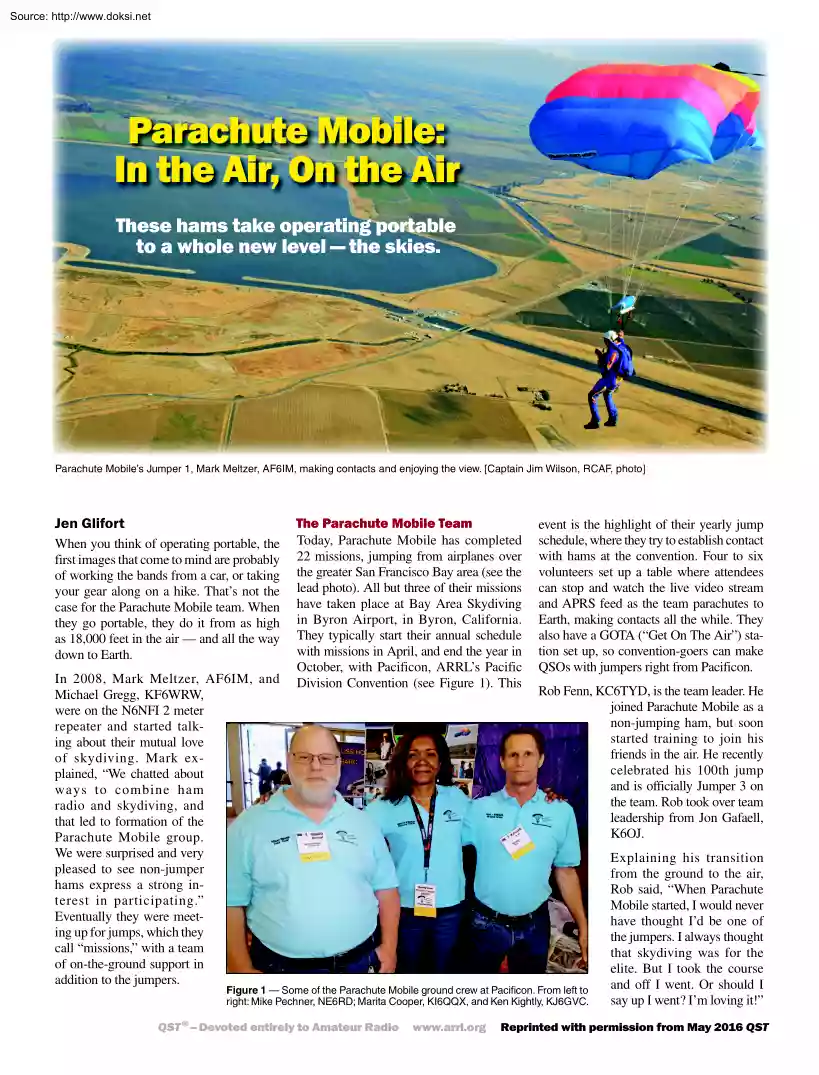
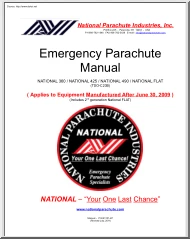
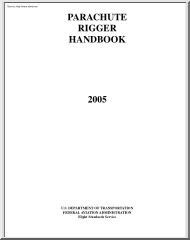
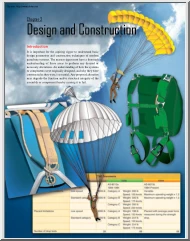
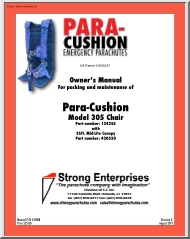
 When reading, most of us just let a story wash over us, getting lost in the world of the book rather than paying attention to the individual elements of the plot or writing. However, in English class, our teachers ask us to look at the mechanics of the writing.
When reading, most of us just let a story wash over us, getting lost in the world of the book rather than paying attention to the individual elements of the plot or writing. However, in English class, our teachers ask us to look at the mechanics of the writing.